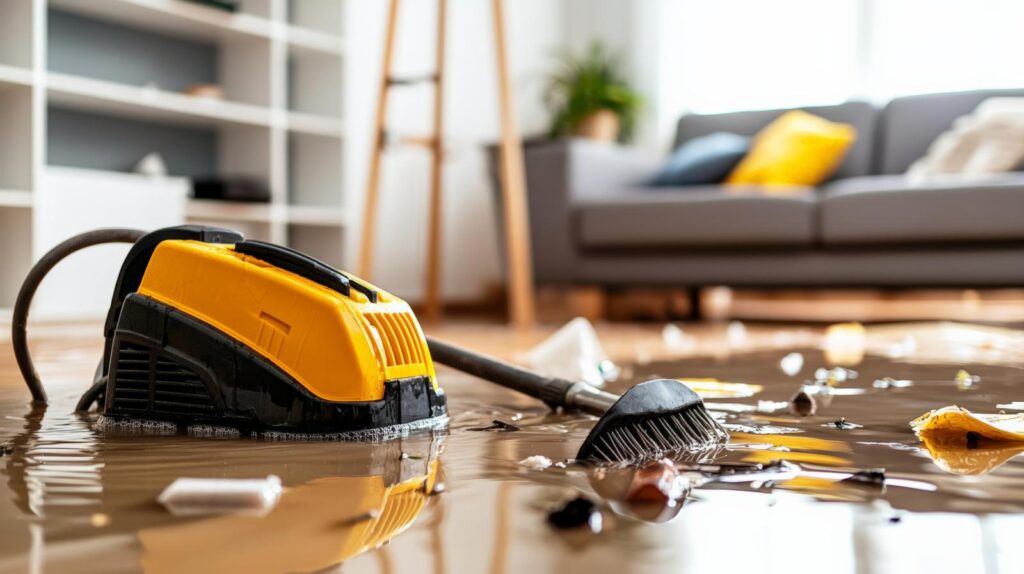
Contents
When tackling water damage restoration, choosing genuine water extraction tools is essential for effective results. High-quality equipment, like submersible pumps and vacuum extractors, minimizes risks like mold growth and structural harm. You’ll need to contemplate specific features and applications of each tool, along with brand reliability. Understanding these factors can greatly influence your project’s success. So, what key features should you prioritize when selecting the right tools?
Key Takeaways
- Prioritize high-quality tools to ensure efficiency and safety during water extraction processes.
- Evaluate suction power, portability, and durability when selecting equipment for restoration projects.
- Research reputable brands that comply with industry standards and have positive customer feedback.
- Regularly maintain tools by cleaning, inspecting, and lubricating to ensure optimal performance and longevity.
- Consider warranties and customer support as essential factors in choosing reliable water extraction equipment.
Understanding the Importance of Quality Tools in Water Extraction
When you’re tackling water extraction, the quality of your tools can make all the difference in efficiency and effectiveness.
Using subpar equipment may lead to inadequate results, prolonging the extraction process and potentially causing further damage. High-quality tools not only enhance your performance but also guarantee safety during the operation.
Investing in reliable equipment helps you achieve faster water removal, minimizing the risk of mold growth and structural issues.
It allows you to work confidently, knowing you’re equipped for the task at hand. Furthermore, quality tools often come with better warranties and customer support, fostering a sense of community among users who rely on them.
Key Features to Look for in Water Extraction Equipment
As you evaluate water extraction equipment, it is vital to focus on key features that enhance performance and reliability. Selecting tools with the right specifications will guarantee effective water removal and improve overall efficiency in restoration projects.
| Feature | Importance |
|---|---|
| Suction Power | Determines the effectiveness of water removal, critical for large jobs. |
| Portability | Lightweight and compact designs facilitate easy transport and maneuverability. |
| Durability | Sturdy materials secure long-lasting performance, reducing the need for frequent replacements. |
Types of Water Extraction Tools and Their Applications
Water extraction tools come in various types, each designed for specific applications in restoration and cleanup scenarios.
When you’re selecting the right tool, consider these main options:
- Submersible Pumps: Ideal for removing large volumes of standing water quickly, often used in flooded basements.
- Vacuum Extractors: Perfect for extracting water from carpets and upholstery; they’re efficient for smaller areas.
- Air Movers: While not a direct extraction tool, they’re essential for drying surfaces after water removal, speeding up the restoration process.
- Dehumidifiers: Important for controlling humidity levels post-extraction, preventing mold growth and structural damage.
Evaluating Brands and Manufacturers for Reliability
How can you guarantee the water extraction tools you choose are reliable? Start by researching reputable brands known for their quality and durability. Check for certifications and industry standards, as these often indicate a commitment to excellence.
Look for manufacturers with a solid track record in restoration equipment; their experience can be a good indicator of reliability.
Next, read customer reviews and testimonials. They provide insight into real-world performance and user satisfaction. Pay attention to any common issues mentioned, as well as how the manufacturer addresses them.
Finally, consider the warranty and customer support offered. A reliable brand will stand behind its products, providing you with peace of mind.
Maintenance and Care for Water Extraction Tools
To guarantee peak performance and longevity of your water extraction tools, regular maintenance is essential.
By following these simple steps, you’ll ascertain your equipment remains reliable and effective:
- Clean After Use: Remove dirt and debris from the tool’s surface and filters to prevent clogs and damage.
- Inspect Regularly: Check hoses, connections, and seals for wear or leaks. Address any issues immediately to prevent further damage.
- Lubricate Moving Parts: Apply appropriate lubricant to moving components to reduce friction and wear, maintaining smooth operation.
- Store Properly: Store tools in a dry, cool place, avoiding exposure to extreme temperatures or moisture that can cause corrosion.
Summary
In the world of water extraction, choosing genuine tools can mean the difference between success and ongoing issues. Imagine facing a restoration project, only to realize your equipment isn’t up to the task. By investing in high-quality tools and reputable brands, you not only enhance efficiency but also safeguard against future problems like mold growth. So, before you plunge into your next project, take a moment to verify your tools are reliable. The peace of mind you gain is invaluable.
Recent Posts
Selecting the Right Tools for Water Extraction
Did you know that improper water extraction can lead to up to 40% more damage
3 Tips for Selecting Water Extraction Tools
Many people overlook the impact of water type on extraction tool selection, yet it’s vital
Why Choose the Right Water Extraction Tools?
Choosing the right water extraction tools is crucial for effective moisture management. Using appropriate equipment
